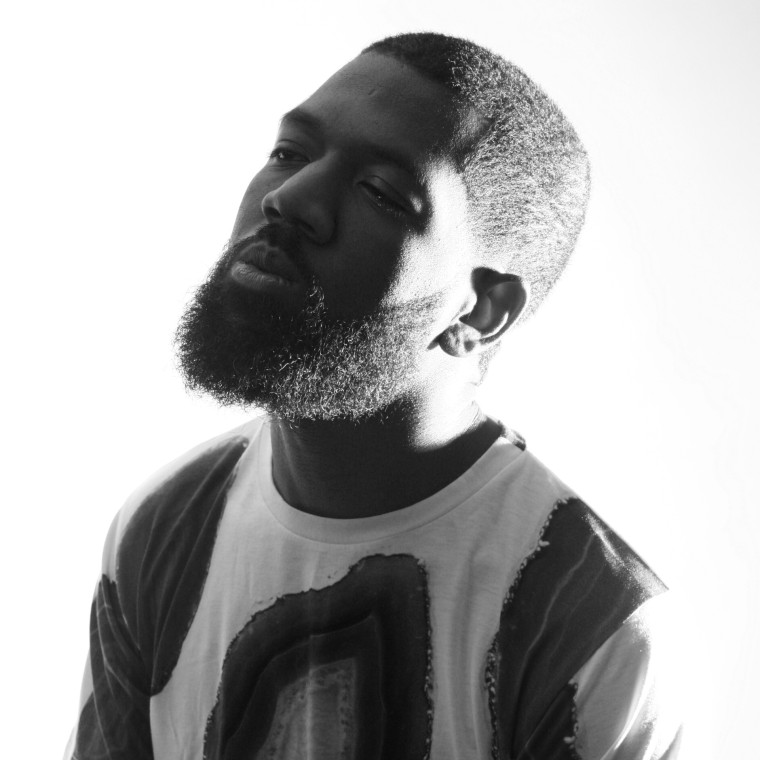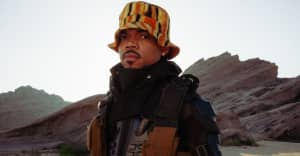 Natalia Jacqueline
/
Brandon Breaux
Natalia Jacqueline
/
Brandon Breaux
When most of your music library lives on a computer, the cover art for an album or mixtape can be easy to overlook. But Chicago artist Brandon Breaux's painterly style doesn't seem inhibited by medium.
Breaux is responsible for each of Chance The Rapper's impactful, vivid mixtape covers, including 2013's Acid Rap, which exploded in tandem with the music. His soulful style harkens back to a time when a CD's shrinkwrap contained not just the music you wanted to hear, but a booklet that could shed further light on our perception of an artist or group. And what better introduction to Chance than that violet sky and bugged out expression? That's probably why Breaux was once again tapped to design the cover for the forthcoming Chance 3. As Chance The Rapper continues his musical ascent, Breaux's work visually defines his unique character in blooming color.
I spoke to him over email about his art, life, and motivations. Breaux is hosting an art show with Dougan Khim called Over 9000 on June 10, 2016 at the Chicago Art Department.
What are some of your biggest influences?
Anime, technology, and documentaries about quantum theory. I really enjoy that shit.
What's your favorite anime? What quantum theory documentaries would you recommend to beginners?
I have to say Neon Genesis Evangelion, the original series and all the movies. I'm actually working on two Evangelion-inspired paintings right now. It was very thorough with analysis of the characters and their development, and the concepts were really dark, intense and tripped the fuck out. When I was about 16, I saw Akira then Evangelion. Before that, shit like Wicked City would come on Cinemax late at night but that was my only exposure before a friend started lending me titles like Devil-Man.
[For documentaries on quantum theory] What The Bleep Do We Know, Through the Wormhole with Morgan Freeman and maybe even DMT: The Spirit Molecule (the book) are good places to start. My art deals with some aspects of the unseen universe and other entities, so looking at those gives me insight on the latest theories, and a lot to speculate on. I feel like quantum physicists are explorers, but instead of exploring stars and untouchable planets they're exploring the undiscovered shit right in front of us, trying to find more depth and meaning to life aside from how the world we live in programs us to view it. That's really intriguing to me. I'm always searching for more information about existence.
How do you feel about the state of graphic design in hip-hop today?
I think it's still behind, but I think it's come a long way especially since we first start doing these projects. I really feel like the work I did with Chance put more of an emphasis on actual artwork. I mean, look at the Slime Season 3 cover, it's great. I also love what Soulection does with their covers; that's fueled by the Instagram photographer hype, but it's good work.
Is your art a part of the youth and mental wellness program you're working on in Chicago?
It's an overall health awareness initiative we are trying to push, and we're very new to it but I see it changing the landscape in our community both figuratively and literally. My personal art is very much an exploration of the human mind from my perspective. I think that's apparent in the Chance artwork through the surreal themes and juxtaposition of the subject and the sky, the individual being a microcosm of the universe at large, which in the works is typically above and behind Chance. You always see stars and the sky in the covers, and that's just a part of my DNA that I put into the branding. It's very personal to me. My father was an amazing artist and musician who had an incident after taking LSD, which triggered paranoid schizophrenia, and later bipolar disorder. This led to him not being a part of my life for a long time. After learning this as a child I had a huge fear of losing my mind, and I was more scared of that than death. Resisting it made me more anxious so I turned it into a positive and made it what my art would explore.
I don't think LSD alone took my father over the edge. I believe it was internalized trauma and the drugs were a coping mechanism, which eventually compromised his mental stability. That's where the interest in promoting mental wellness and helping gain understanding about the importance of mental health and disorders comes from. I think it's important to provide an outlet so we don't get so pent up that our fears turn in to actual voices that we can't escape. I think my father's situation was directly related to, and a result of, circumstances that impact the disenfranchised and I believe it's common in communities that lack resources, just like where we're from.
Did working with an artist like Chance who's been so open about his use of psychedelics affect your perception of them at all?
Naw, not at all. I think psychedelics are useful but not for everyone. Drugs in general expose vulnerabilities and can leave you open to the wrong stuff. But I've been researching psychedelics for a while so I was already informed about the enlightening and positive effects of DMT and LSD before the Acid Rap project.
Your three covers for Chance's mixtapes seem to track a progression—10 Days he's looking up, Acid Rap he's looking right at us, and for Chance 3 he's got his eyes towards the ground.
I'd be lying if I said we planned this all from the beginning. Instead it's been a bit serendipitous but the presence of the trilogy really just rounds it out. The decision to have Chance look down was his own. He was holding his baby daughter in the shoot because he wanted to capture the expression he had on his face when he looked at her, and that distinguishes Chance's posture from the other two. For me in 10 Day he's looking up to a future he is soon to inherit, Acid Rap is like him being in it exploring/experimenting and Chance 3 is like maturity, fully stepping into his greatness, his focus isn't so much on himself but on the clear future.


